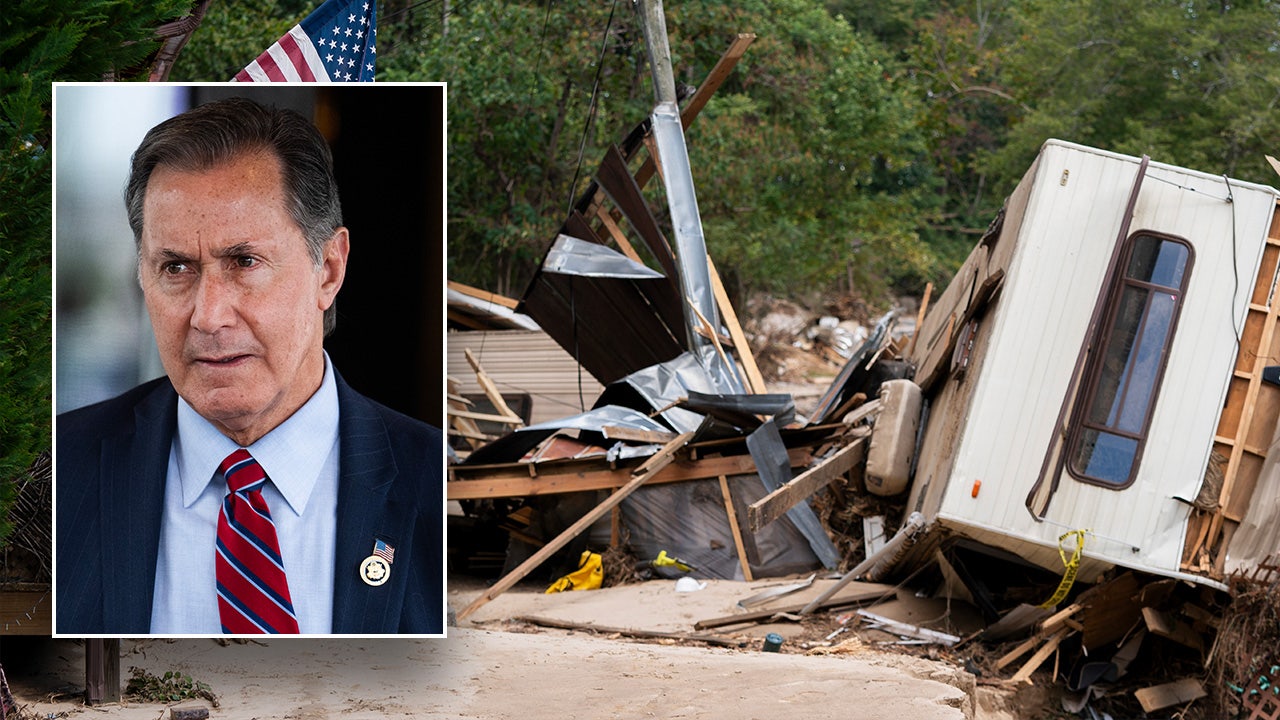West Virginia
WSAZ INVESTIGATES | Recognizing Danger
/cloudfront-us-east-1.images.arcpublishing.com/gray/EPWX5SPFP5CQTCR7OOXTOOD2PA.jpg)
HUNTINGTON, W.Va. (WSAZ) – Select West Virginia schools are rolling out a new tool to help prevent acts of violence on school campuses.
Four districts have installed or are in the process of installing facial recognition technology.
The Department of Education said those county schools include Marion, Taylor, Doddridge, and Putnam.
The technology rollout comes after 19 separate hoax threat calls were reported in December 2022 regarding school shootings or other violence on campuses across the state. At this time, all calls received have been deemed not credible.
Rob Cunningham, the Deputy Cabinet Secretary of Homeland Security, recalled the emotions that ran through the state that winter day.
“I hate that we had to experience that. It’s a very, very stressful situation, especially as a first responder whether… you work in EMS, fire, or police. You know… you’re going to the scene and as far as you know it’s real,” Cunningham said. “As far as the schools once they’re going on lockdown. Your teachers, students, and administrators as far as they know… it’s real.”
All threats were deemed not credible.
Scott Swann, West Virginia native and the CEO of Rank One Computing said his company developed the software used in the facial recognition technology.
The company primarily works with military and law enforcement, but Swann said they wanted to expand their technology to help West Virginia Schools.
“We realized we were sitting on technology that we’re using for some other purposes. We could tailor [it] to really provide a valuable service to the schools,” Swann said.
The software will integrate with pre-existing camera systems on school property to help reduce overall startup costs.
“The idea that if someone is holding a gun, then our computer vision kit essentially… we can create some sort of alert and send that to potentially the school resource officer or even to the emergency services if need be, that someone there may be a gunman on the campus of one of our local schools,” Swann said.
David Harper, Poca High School Principal, said school safety measures have changed throughout the years, but looks forward to implementing a new tool to help keep students safe.
“It doesn’t make it easier. It just makes it a little more comforting to know we have people here and things in place to keep our students safe,” said, Harper.” Threats could happen anywhere…whether it’s in Poca, West Virginia, or in Chicago. You’re not immune to that. I think that is a reality of the situation.”
While concerns about data collection have been raised, Swann said the company is not collecting any additional data the school system collects. All photos and information used to recognize faces are stored on the schools’ network and run through the algorithm.
Rank One Computing is working with state and law enforcement to develop a screening tool to detect criminals including registered sex offenders.
Copyright 2023 WSAZ. All rights reserved.

West Virginia
Handling Harvey no easy task for West Virginia as tackling comes into question – WV MetroNews

MORGANTOWN, W.Va. — Only six of 133 FBS teams, and two at the Power Conference level, allow more passing yards on average than West Virginia in 2024.
No Power Conference program is surrendering more yards per completion than the 14.19 of the Mountaineers, which ranks ahead of only three FBS teams.
Yet as West Virginia (5-5, 4-3) looks to gain bowl eligibility come 3:30 p.m. Saturday when welcoming Central Florida, the Mountaineer run defense has come into question for good reason.
In last Saturday’s 49-35 loss to Baylor, West Virginia surrendered a season-high 5.38 yards per rush as the Bears gained 183 yards on the ground and 512 in all. Only Penn State (222) and Kansas (247) had rushed for more yards this season against the Mountaineers.
Now comes the top rushing attack among major programs in UCF, which rushes for 262.8 yards on average to trail only Army among FBS teams.
Of UCF’s 240 first downs gained this season, 141 have come on rushing plays. Compare that to a run-heavy Mountaineer offense that’s generated 223 total first downs and 109 by way of rushing.
Leading the way for one of the more productive rushing attacks in all of college football is fifth-year tailback RJ Harvey, the nation’s third-leading rusher with 1,328 yards and 19 touchdowns on 196 attempts.
“You have to keep great edges on the defense,” WVU defensive coordinator Jeff Koonz said. “You have to keep technique all 11 guys across the board. If you’re the back side guy pursuing the ball, you have to keep technique and keep your shoulders square. He’s a threat to go anywhere at anytime. He understands the blocking and their scheme. It’s a great challenge for us because it all bases off the inside zone scheme that we just saw against Baylor.”
Another productive outing in Morgantown would allow Harvey to surpass his rushing total of 1,416 yards from last season, when the Orlando native scored 16 times on the ground.
Harvey has faced West Virginia once before, and although the Mountaineers were victorious 41-28 in Orlando last season, the tailback managed 100 yards on 14 carries along with four receptions for 30 yards.
At 5-foot-9 and 208 pounds, Harvey has a combination of power and patience that helps to make him a tough tackle.
“His ability to break tackles and once he gets past the defensive line and linebackers, he can get striking,” said WVU defensive lineman T.J. Jackson, the team leader in sacks and tackles for loss with 5.5 and 12, respectively. “He’s really fast.”
Harvey has rushed for at least 75 yards in every game this season, 126-plus yards on seven occasions and 127 or more yards in four straight contests, during which time he’s totaled 634 yards and 10 touchdowns on 88 carries.
“The thing that sticks out to me is he breaks tackles,” WVU head coach Neal Brown said. “He does a really good on the inside zone play of getting the safeties and everybody to kind of bottle up and he jump cuts it outside and outruns them. That’s going to be the key. The key is to contain him and not let him get on the perimeter for explosives.”
Brown has been critical of the Mountaineers’ tackling in each of their last two contests since Koonz has took over as defensive coordinator after the head coach opted for a change three weeks ago today when previous defensive coordinator Jordan Lesley was dismissed.
“We didn’t tackle as well as we needed to at Cincinnati. We tackled really poorly in the first half against Baylor. It was bad,” Brown said. “If we’re going to have the ability to contain their run game, then we’re going to have to tackle at a much higher level.”
WVU has allowed a staggering 948 yards in those two games, though in the first one at Cincinnati, the Mountaineers forced a season-high three takeaways and two amounted to defensive touchdowns in a 31-24 victory.
Baylor then scored touchdowns on five of its six first-half possessions and twice more in the fourth quarter to seal a 49-35 victory and prevent the Mountaineers from putting together consecutive encouraging efforts.
“We have to have guys attack the ball with leverage,” Koonz said. “We have to understand our leverage. In week 10, you’re probably tired of hearing that. Every coverage and front has a leverage aspect to it. If I’m playing my position and I get to the ball-carrier, I have to attack that ball-carrier with certain leverage, so that if I do miss the tackle, someone else should be close if we’re playing with the effort we’re supposed to be.”
West Virginia
Things to do this week in Charleston, and beyond: Nov. 19-25, 2024

West Virginia
Reaction to plans to close West Virginia Children’s Home – WV MetroNews

ELKINS, W.Va. — The West Virginia Children’s Home in Elkins will close at the end of the year.
The state Department of Human Services announced the closing in recent days.
The 25-bed facility for foster children was built in 1909 and serves children from 12 to 18 years old and, in recent months, has consistently housed 10 or fewer children.
The facility also has the number of maintenance concerns any structure more than 110 years old would have.
Kylee Hassan, the marketing director for Mission West Virginia Adoption Resource Exchange, said the move away from an institutional setting will encourage more growth and development that could lead to better outcomes.
“We see the benefits when a child is with a family that has supports in place versus growing up in a facility that puts them at a disadvantage,” Hassan said.
The state already has more than 6,000 children in the foster care system and a shortage of families to care for them. The need for foster families of all types has been dire in recent years, and the need for families to work with older children is currently high.
While organizations continue working to get more families qualified, the Foster Care and Adoption Services program operated by Genesis will be expanded with state resources.
“The real pressure is on us to find families for those children,” Hassan said. “We are always in need of foster families to help, especially teenagers.”
Leaving the institutional care model behind will put more kids in the foster system in actual families where they learn the importance of relationships. The family setting is a full-time environment where children learn the importance of the family unit, building relationships, learning how to follow rules, and how to handle disappointment.
“The one that comes most to my mind is reduced trauma,” Hassan said. “So, children placed with a family are less likely to experience additional trauma from being separated from siblings or other things.”
The “home” setting comes with the same people guiding young people through experience, different than the sterile institutional environment where different shifts of people may manage the populations in homes. Homes also give foster kids an opportunity to build trust with others and learn the importance of responsibility and respect.
“What friendships look like, what healthy relationships with family or friends look like,” Hassan said. “Even learning basic skills like how to get your driver’s license.”
Hassan contends children growing up in homes are more resilient and have a better chance to succeed when they age out of the foster system. The children not only learn from adults in a family setting, but they also see the family unit in action, giving them practical knowledge needed to be successful in the world of work.
“When children grow up in the facility type setting, they don’t know how to be on their own when they age out,” Hassan said. “And it’s harder for them to establish relationships and connections, which puts them at a higher risk.”
-

 News1 week ago
News1 week agoHerbert Smith Freehills to merge with US-based law firm Kramer Levin
-
/cdn.vox-cdn.com/uploads/chorus_asset/file/25724877/Super_Nintendo_World.png)
/cdn.vox-cdn.com/uploads/chorus_asset/file/25724877/Super_Nintendo_World.png) Technology1 week ago
Technology1 week agoThe next Nintendo Direct is all about Super Nintendo World’s Donkey Kong Country
-
Business6 days ago
Column: OpenAI just scored a huge victory in a copyright case … or did it?
-

 Health6 days ago
Health6 days agoBird flu leaves teen in critical condition after country's first reported case
-

 Business3 days ago
Business3 days agoColumn: Molly White's message for journalists going freelance — be ready for the pitfalls
-
Politics1 week ago
Editorial: Abortion was on ballots across the country in this election. The results are encouraging
-
World7 days ago
Sarah Palin, NY Times Have Explored Settlement, as Judge Sets Defamation Retrial
-

 Politics2 days ago
Politics2 days agoTrump taps FCC member Brendan Carr to lead agency: 'Warrior for Free Speech'




















